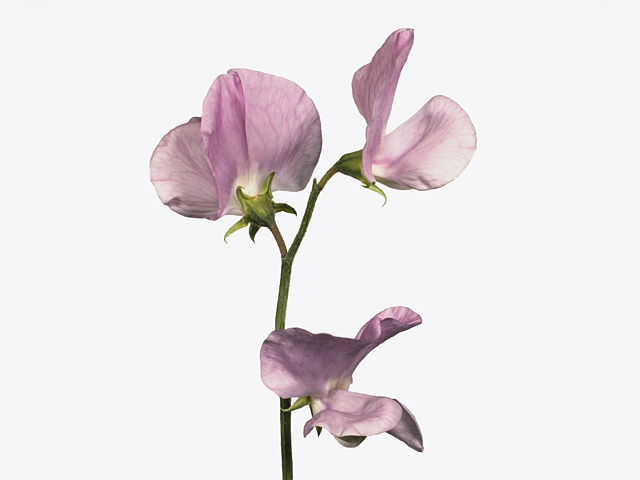Lathyrus odoratus other lilac

| Fruit type | Pod |
| Leaf type | Foliage leaf |
| Flower color | Pink |
| Soil fertility | No poor soils |
| Inflorescence | Few-flowered |
| Structure (tissues) | Herbaceous |
| Light conditions | Sunny; Semi-shades |
| Plant, growth type | Climbing |
| Moisture requirements | Well-drained |
Lathyrus odoratus, commonly known as Sweet Pea, is a delightful flowering plant that adds beauty and fragrance to any garden or landscape. With its charming pink flowers and unique pod fruits, this plant is a must-have for gardening enthusiasts.
Sweet Pea belongs to the Fabaceae family and is native to the Mediterranean region. Its fruit type is a pod, which contains the seeds of the plant. The leaves of this species are foliage leaves, providing an attractive backdrop to the vibrant flowers. Speaking of flowers, the Sweet Pea produces lovely pink blooms that are sure to catch the eye and bring a touch of charm to your surroundings.
When it comes to soil fertility, the Sweet Pea thrives best in well-drained soil. It is not tolerant of poor soils, so it is essential to ensure that the soil is of good quality. Proper soil preparation and regular fertilization can help promote healthy growth and abundant flowering.
Sweet Pea's inflorescence, or flowering structure, typically consists of a few flowers grouped closely together. This creates a beautiful cluster of blooms that elevates the overall visual appeal of the plant. Additionally, the inflorescence provides an abundance of nectar, making it a favorite among pollinators such as bees and butterflies.
In terms of its structure, Sweet Pea is classified as herbaceous, meaning it has soft and green tissues. This characteristic makes it well-suited for climbing and sprawling growth types. As a climbing plant, it will require some form of support such as a trellis or fence to allow it to reach its full potential. Its ability to climb adds a vertical element to the garden, making it a fantastic choice for vertical landscaping or creating visual interest on bare walls.
Sweet Pea prefers bright and sunny conditions but can tolerate partial shade as well. This versatility allows gardeners to incorporate it into various garden designs, whether in full sun areas or slightly shaded spots. The plant's stunning flowers will continue to bloom best under optimal light conditions.
When it comes to moisture requirements, Sweet Pea prefers well-drained soil. It is crucial to avoid waterlogged conditions as they can lead to root rot and other problems. Regular watering, especially during dry spells, is necessary to maintain the plant's health and vigor. Additionally, applying a layer of mulch around the base of the plant can help retain moisture and prevent weed growth.
Overall, growing Sweet Pea can be a rewarding experience for any gardener. From its beautiful pink flowers to its fascinating pod fruits, this plant adds a touch of elegance and fragrance to any landscape. Just remember to provide the proper soil conditions, support for climbing growth, and adequate moisture, and you will be rewarded with a stunning display of Sweet Pea's charming blooms.
Market availability index by month:
| Jan. | Feb. | Mar. | Apr. | May | Jun. | Jul. | Aug. | Sep. | Oct. | Nov. | Dec. |
|---|---|---|---|---|---|---|---|---|---|---|---|
| 1 | 1 | 2 | 3 | 4 | 3 | 2 | 1 | 1 | 1 | 1 | 1 |